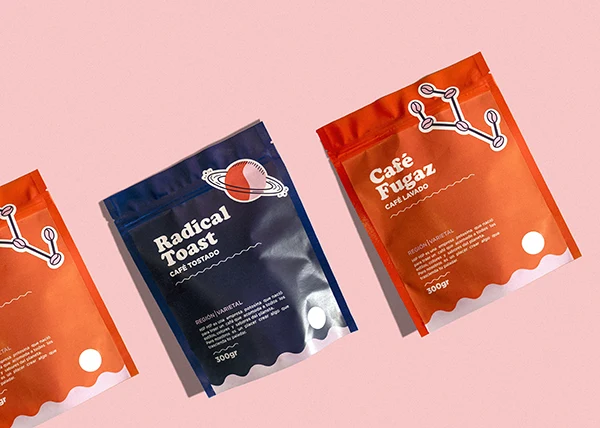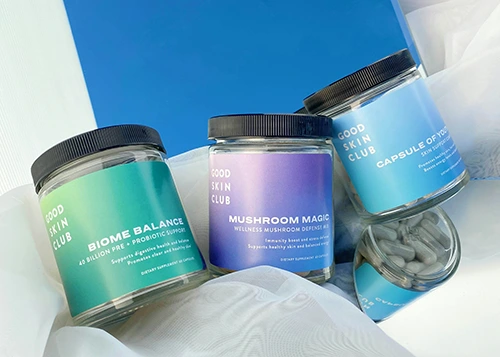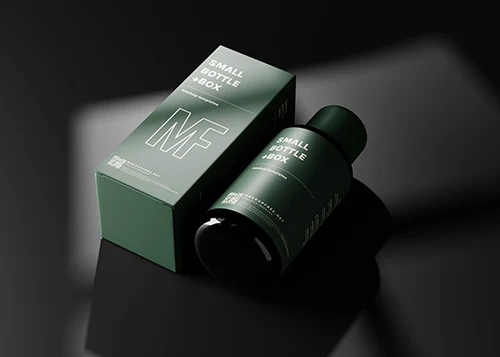Introduction: The Importance of Vitamin and Supplement Packaging
Let’s talk about vitamin and supplement packaging—it’s not just a box or bottle sitting on a shelf. It’s the unsung hero that keeps your product safe, tells your brand’s story, and meets the rules that keep everything legit. Whether you’re packing capsules, powders, or liquids, the right choice can make or break how your customers see you. The global dietary supplements market is on a tear, expected to reach USD 239.4 billion by 2030 with a 7.4% CAGR from 2023. That’s a massive opportunity, and packaging is your ticket to ride that wave.
Why does this matter so much? It’s about more than just keeping vitamins fresh—though that’s critical, especially for things like vitamin C that fade under light or moisture. It’s also about grabbing attention in a sea of options and showing customers you care about their values, like sustainability. Research from Nielsen shows 73% of people prefer eco-friendly packaging , while The Packaging Group found 70% judge a brand by its look.
Defining Vitamin and Supplement Packaging
So, what exactly are we dealing with here? Vitamin and supplement packaging is all about the containers that hold your health products—vitamins, minerals, herbs, or even protein powders—whether they’re tablets, capsules, powders, or liquids. It’s got a tough gig: shielding them from light, air, and moisture, keeping them stable for months, following strict regulations, and still looking sharp enough to catch a buyer’s eye. Unlike a snack bag, this stuff often needs extras like child-resistant caps or tamper-evident seals, plus labels that clearly spell out dosage and claims, as required by the FDA (FDA Dietary Supplement Labeling Guide).
You’ll find it in all sorts of forms—plastic bottles, glass jars, blister packs, pouches, or metal tins. And with a little creativity, like unique shapes or standout colors, it can go from basic to bold. It’s part of a growing trend tied to the supplement boom, where people want packaging that’s both practical and personal—maybe even eco-friendly. That’s where it gets exciting: turning a necessity into something that feels special.

Key Considerations for Effective Packaging
Great packaging doesn’t just fall into place—it takes thought. Let’s break down what you need to focus on to get it right.
Protecting Your Product
First up, it’s all about keeping your supplements safe. Light can zap vitamin C, and moisture can turn powders into a clumpy mess. That’s why you need packaging that blocks those threats—think opaque bottles or tightly sealed pouches. Glass or metal can even stretch shelf life to 24 months, which is a big win for keeping things fresh, per industry standards.
Making It Easy to Use
Then there’s the user side. Packaging should be a breeze to handle—80% of buyers say ease of use sways their pick, according to Packaging Digest. Child-resistant caps are a must for some products (thanks, CPSC), but easy-open tabs or dosing scoops can make it a hit with everyone else too.
Building Your Brand
On the branding front, this is your chance to shine. Custom shapes or colors can boost recognition by 15%, per case studies—one brand saw a 10% sales jump with a hexagonal bottle, per their 2024 report. Looks matter: 70% of purchases hinge on packaging appeal, says The Packaging Group. Match it to your vibe—earthy tones for eco-lovers or sleek finishes for premium feels—and you could see loyalty climb by 10%.
Staying Legal
Finally, compliance isn’t optional. The FDA wants clear labels with ingredients, servings, and claims (FDA Dietary Supplement Labeling Guide), and the EU has its own rules. Skip child-resistant caps or tamper-evident seals where needed, and you’re risking recalls—10% of brands learned that the hard way in 2023, per FDA data (FDA Recalls).
Consideration Table
| Factor | Why It Matters | Impact on Packaging | Example Requirement |
|---|---|---|---|
| Functionality | Protects, lasts, easy use | Opaque, sealed, user-friendly | Light barrier for vitamin C |
| Branding | Grabs eyes, builds loyalty | Custom shapes, colors | Unique bottle design |
| Compliance | Keeps it legal, safe | Child-resistant, labels | FDA labeling standards |
Nail these, and your packaging’s set to win.
Materials Selection
Choosing the right material is where the rubber meets the road. Let’s dive into your options.
Plastic: Versatile and Budget-Friendly
Plastic—think PET, PP, or HDPE—is a go-to for many. It’s light, tough, and costs between $0.50 and $5.00 per unit. The market’s growing fast, expected to hit USD 415.6 billion by 2026 with a 5.2% CAGR, per MarketsandMarkets (MarketsandMarkets Plastic Packaging Market). It’s great for molding into custom shapes or adding child-resistant caps, but recycling’s a sore spot—only 9% made it in 2018, per the EPA. Perfect for capsules, tablets, or liquids with seals.
Glass: Premium and Pure
Glass brings a different vibe—pure, premium, and priced from $5.00 to $50.00 per unit. Its market’s climbing to USD 74.9 billion by 2025, also at a 5.2% CAGR, says Allied Market Research Glass Packaging Market. It won’t leach chemicals, recycles well (up to 70% in some areas), and feels luxe—ideal for oils or high-end vitamins. The catch? It’s heavy and breakable, so shipping costs sting.

Metal: Strong and Steady
Metal, like aluminum or steel, runs $5.00 to $20.00 per unit and offers durability. The metal packaging market’s at USD 110.7 billion, growing at 2.5% CAGR through 2028, per Fortune Business Insights Metal Packaging Market. It’s tamper-proof and blocks light and air like a champ, making it a fit for powders or capsules that need to last. Downside: it’s pricier and less flexible for funky shapes.
Paper and Cardboard: Eco Warriors
Paper and cardboard are light and green, costing $0.50 to $2.00 per unit. Their market’s at USD 400.1 billion with a 3.5% CAGR, per Grand View Research. With a 68.2% recycling rate (EPA), they’re customizable and eco-friendly—great for outer boxes or dry supplements. Just watch out: they’re not the best against moisture or light without extra liners.
Bioplastics: The Green Future
Bioplastics, made from corn or sugarcane, range from $1.00 to $5.00 per unit. They’re on fire, with a market hitting USD 13.8 billion by 2027 at a 16% CAGR. They’re compostable, cutting carbon by up to 50%, and work like plastic for eco-conscious brands. The hitch? They’re harder to find and need special recycling.
Material Comparison Table
| Material | Pros | Cons | Cost Range (per unit) | Market Growth Rate | Recycling Rate | Best For |
|---|---|---|---|---|---|---|
| Plastic | Lightweight, versatile | Less eco-friendly | $0.50–$5.00 | 5.2% (2021–2026) | 9% (2018) | Capsules, liquids |
| Glass | Inert, premium | Heavy, fragile | $5.00–$50.00 | 5.2% (2020–2025) | Up to 70% | Liquid supplements |
| Metal | Durable, tamper-evident | Higher cost, heavy | $5.00–$20.00 | 2.5% (2021–2028) | Up to 75% | Powders, capsules |
| Paper/Cardboard | Sustainable, customizable | Less protective | $0.50–$2.00 | 3.5% (2022–2030) | 68.2% (2018) | Outer, dry supplements |
| Bioplastics | Renewable, compostable | Limited availability | $1.00–$5.00 | 16% (2022–2027) | Varies | Eco-conscious brands |
Choose based on what your product needs and how you want to show up.
Design and Customization
Let’s get into design—because good packaging isn’t just functional, it’s personal.
Shapes That Stand Out
Think about shape: a hexagon or square bottle can make your product pop on the shelf, boosting visibility by 10%, per industry case studies. It’s a small tweak—custom dies add $0.10 to $0.50 per unit, says Printing Industries of America (Printing Industries of America Survey)—but it can make a big difference.
Colors and Finishes That Speak
Color’s your next move. A matte finish ($0.05–$0.10/unit) or soft-touch coating ($0.10–$0.20/unit) can elevate the feel—one brand’s matte black bottles drove sales up 15%, per their 2024 report. It’s about matching your brand: bold for energy, calm for wellness.

Labels That Inform and Impress
Labels are where clarity meets style. Offset printing ($0.05–$0.20/unit) or digital ($0.10–$0.50/unit) keeps dosage info crisp and branding sharp. For plastic, flexography’s a steal at $0.05–$0.15 per unit. It’s your face to the world—make it count.
Features That Win Users Over
Then there’s usability: child-resistant caps ($0.15–$0.30/unit) keep it safe, while scoops or tabs make it easy—80% of buyers care about that, per Packaging Digest. Custom packaging might run $5.00–$50.00 versus standard $0.50–$5.00, but it can lift loyalty by 15%. That’s worth a look.
Sustainability Trends
Sustainability’s not just a buzzword—it’s where the market’s heading. Let’s explore what’s trending.
Recyclable Materials on the Rise
Recycled materials are leading the charge. Paper’s at 68.2% recycling, per the EPA, while bioplastics are zooming to a USD 13.8 billion market by 2027 with a 16% CAGR, per Smithers. They’re practical and planet-friendly.
Cutting Waste with Smarter Design
Less is more here. Minimalist designs can trim material use by 10–20%, saving $0.10–$0.50 per unit. It’s a win for your wallet and the earth—no extra fluff needed.
Biomaterials as the Next Big Thing
New players like bamboo or mycelium are stepping up, cutting carbon by 15%, per industry reports. They’re still niche, but they’re perfect for brands wanting to push the eco-edge.
What Buyers Want
Here’s the kicker: 73% of consumers prefer sustainable packaging, per Nielsen. It’s not just good karma—it drives loyalty and sales. Going green’s a no-brainer.
Sustainability Trends Table
| Trend | Description | Market Growth Rate | Consumer Impact | Cost Impact |
|---|---|---|---|---|
| Recyclable Materials | PCR plastic, paper | 16% (Bioplastics) | 73% prefer green | $0.50–$5.00/unit |
| Reduced Waste | Minimalist designs | N/A (Integrated) | Cuts waste 10–20% | Saves $0.10–$0.50 |
| Biomaterials | Bamboo, mycelium | 15% carbon reduction | Eco-buyer appeal | $1.00–$10.00/unit |
Regulatory Requirements
Rules aren’t sexy, but they’re essential. Here’s what you need to know.
FDA Rules in the US
In the States, the FDA’s got your back—and your front. Labels need ingredients, servings, and claims spelled out (FDA Dietary Supplement Labeling Guide). Child-resistant caps and tamper-evident seals are non-negotiable for some—10% of brands faced recalls in 2023 for missing these, per FDA data (FDA Recalls).
EU Standards Across the Pond
In Europe, it’s the Food Supplements Directive for labels and the Packaging Waste Directive pushing recycling—50% by 2025, 55% by 2030 (EU Packaging Directive). Mess up, and fines can hit €4 million.
Other Markets to Watch
Canada’s Natural Health Products rules or Australia’s TGA have their own takes—think safety and labeling (Health Canada Natural Health Products). Wherever you sell, check the local playbook.
Choosing a Packaging Partner
Your manufacturer’s your wingman—here’s how to pick the right one.
Experience Counts
Start with know-how. A partner who’s done supplements—think child-resistant designs or FDA-compliant labels—is gold. Ask for case studies to see their chops.
Capacity to Deliver
Next, make sure they can keep up. Minimum orders range from 1,000 to 100,000 units, with lead times of 15–50 days. Match that to your scale and timeline.
Quality You Can Trust
Quality’s non-negotiable—ISO 9001 certification or inspections ($100–$500/batch) keep defects at bay. You don’t want surprises.
Green Cred Matters
If sustainability’s your thing, look for recycled or bio-options—73% of buyers care, per Nielsen. It’s a bonus that pays.
Support That Sticks
Lastly, good communication’s key. Quick replies and clear quotes mean fewer headaches. BrillPack checks all these boxes—worth a chat.
Manufacturer Checklist
| Criteria | Why It Matters | Action | Cost Impact |
|---|---|---|---|
| Experience | Quality, compliance | Check case studies | Minimal |
| Capacity | Meets volume, custom needs | Verify MOQs, times | Varies by volume |
| Quality Control | No defects | Request inspections | $100–$500/batch |
| Sustainability | Eco-cred | Confirm materials | Higher for green |
| Support | Cuts delays | Test communication | Minimal |
FAQs: Common Questions Answered
Got questions? Let’s tackle the ones people ask most.
What Are the Main Types of Packaging for Supplements?
You’ve got bottles (plastic or glass), blister packs, pouches, jars, and tins. Liquids love bottles, powders fit jars, capsules shine in blisters—match your product.
How Do I Keep My Packaging FDA-Compliant?
Know the rules: list ingredients, servings, claims clearly. Add child-resistant caps where needed, test for safety, and keep records—it’s your shield against trouble.
What’s the Most Sustainable Option?
Recycled paper (68.2% rate, EPA), bioplastics, or glass top the list—73% of buyers lean green, per Nielsen. Slim designs cut waste too.
How Do I Pick the Right Material?
Think about your needs—plastic for moisture, glass for purity, paper for eco-appeal. Compare costs ($0.50–$50.00), strength, and recycling. Test a few.
What Makes a Design Effective?
Clear labels, brand colors, safety features, and ease—custom shapes catch 70% of eyes, per The Packaging Group. Make it yours.
How Much Does Custom Packaging Cost?
Standard’s $0.50–$5.00, custom’s $5.00–$50.00. Bulk can save 20%, and sales might jump 15% with branding.
Any Certifications to Look For?
FSC for paper, BPI for compostables, ISO 9001 for quality—they show you’re serious and green.
Conclusion: Pack Smart, Win Big
Your vitamin and supplement packaging isn’t just a holder—it’s your brand’s big moment. With the market racing to USD 239.4 billion by 2030 (7.4% CAGR), the right packaging keeps your product safe, meets the law, and pulls buyers in. Custom designs—like a safety-capped bottle with your logo—can boost loyalty by 15%, while eco-choices like recycled paper win over 73% of shoppers, per Nielsen. It’s your shot to stand out.
Start with what works: blisters for capsules, pouches for powders, glass for liquids. Then add your flair—vibrant colors, smart shapes, green touches. It’s more than packaging; it’s your voice. Try it out, refine it, and team up with experts like BrillPack to make it real. Pack smart—your brand’s got a bright future ahead.
Contact for a Free Consultation!

